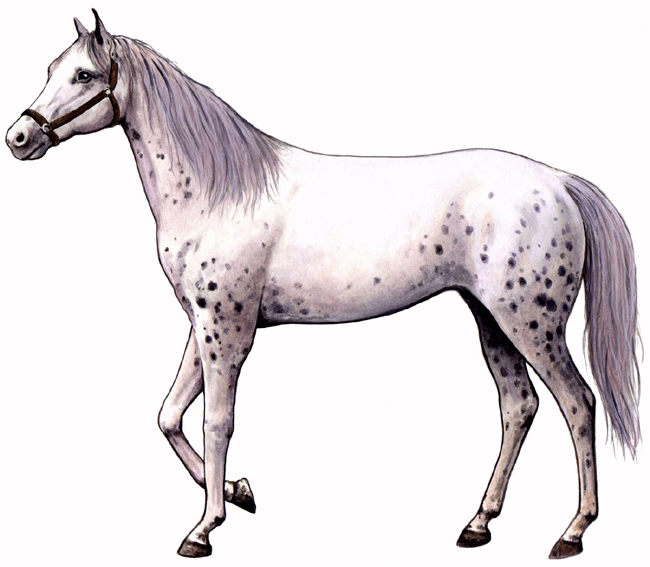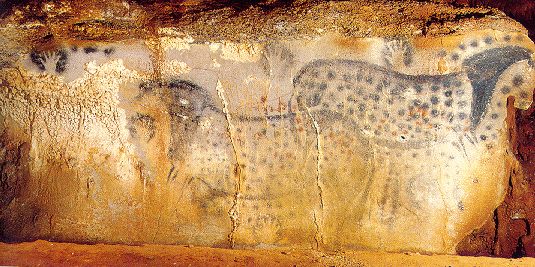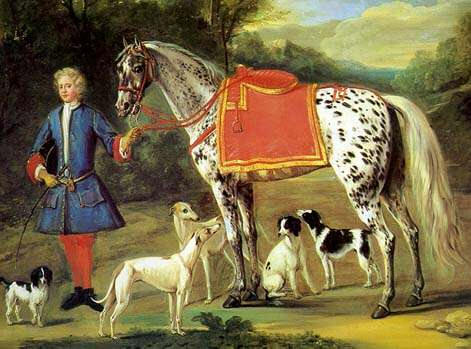|
|
| Spanish Jennet Horse |
|
 |
|
 |
|
The history of the
Spanish Jennet horse began in Ancient Spain and developed in
Medieval Spain as the product of the chance collision of several
worlds and their horses. The mingling of these cultures and their
mounts sparked the flame that became the world's finest riding horse
- the Spanish Jennet. |
|
 |
|
The
18th C. English painter John Wooton painted many spotted horses
including a leopard horse specifically titled "Lady Conaway's
Spanish Jennet". |
About 3,500 years ago,
somewhere in the steppe region of Asia, horses were domesticate. The
spotted horses were especially eye-catching and so they frequently
became models for the local artisans. Some of those relics have
endured to present day leaving us some record of horses during
ancient times. The area known as Ferghana (a
frontier province of Persia) became a source of supply of spotted
horses in prehistoric and ancient times. There are spotted horses in the art
of ancient Egypt dating from 1500 - 1300 BC. Spotted horses are
depicted in Mycenean art from the 14th century BC. Pinto is depicted
in a wall painting in the necropolis of Thebes circa 1415 BC.
Around 1000 BC, constantly in search
of lush pasture for their herds, a nomadic tribe from the steppe
region known as Scythia (area lying on the Black Sea between the
mouths of the Danube and the Don Rivers) migrated westward; along
the banks of the Danube River. These peoples were consummate
horsemen. The modern day town of Hallstatt, Austria now occupies the
area of the nomad's settlement. All that remains of the nomadic
people is an ancient burial area, rich in archeological finds,
bespeaking the nature of that early migrated culture. A sword dating
to @800 BC specifically depicts horses with spots. In an Etruscan tomb in Italy, dated
about the same time - 800 BC, exists a wall painting depicting a
horse with a spotted rump. Since the Etruscans
came to Italy by ship @1000 BC they likely had brought those horses
with them from Asia Minor, the steppe region. The Chinese emperor Wu Ti ( 2nd C.
BC) eventually secured the "Heavenly Horses" of Ferghana (112 - 101
BC) to import to China to improve and replace the inferior native
stock. Among those horses are depicted spotted horses. Chinese trade
with the west insured a steady flow of improved horse flesh entering
China. Spotted horses have been common in China for the last 2000
years as evidenced in surviving art and persist to present day.
|
Image
copyright Feenixx Publishing.
All right reserved. May not be used without prior written consent. |
|